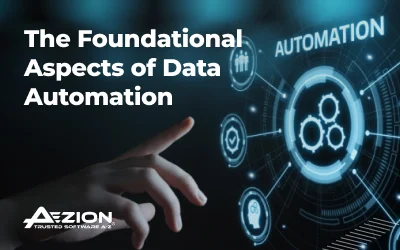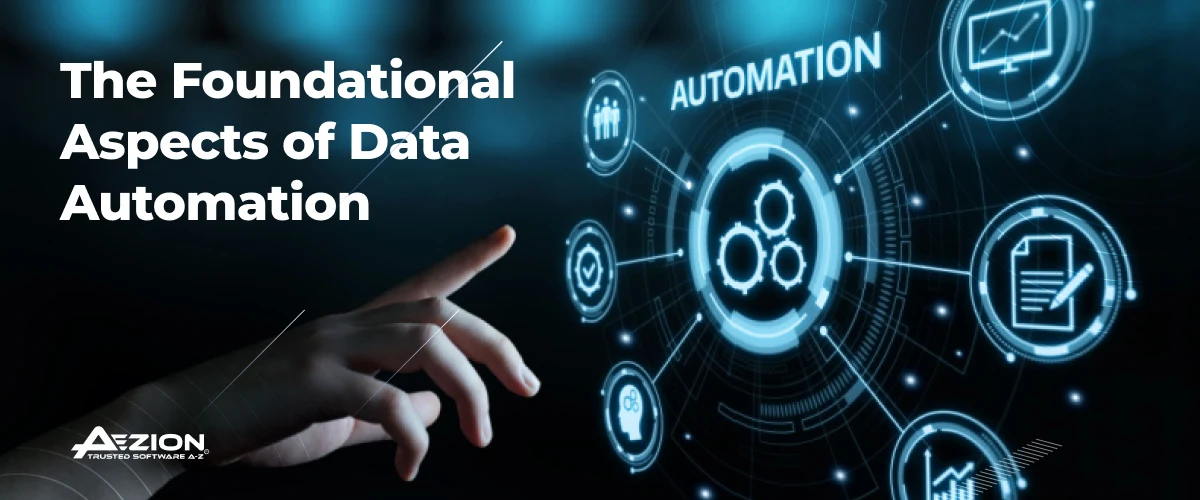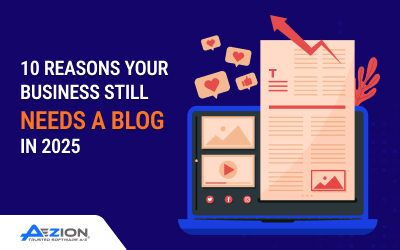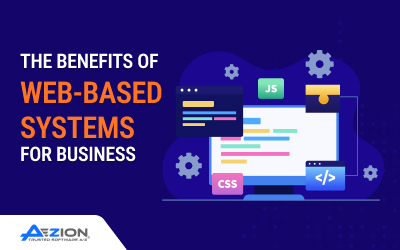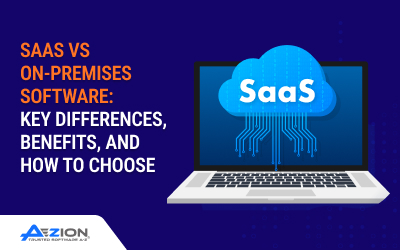Summary
This blog explores aspects of modern data automation while focusing on its role in improving the operational efficiency of any business and enabling real-time decision-making. You’ll also learn more about data automation and its lifecycle. It delves into the evolving landscape of data automation and how data engineering service providers can help businesses implement it.
Introduction
Data automation has become an operationally efficient and innovative decision-making strategic enabler in the fast-paced, data-intensive age. Organizations can give more time to insights and innovation by reducing human effort and automating repetitive data work. This is necessary as it is reported that around 40% of employees spend at least a quarter of the year reworking. Therefore, to know how data automation can improve any business’s operations, in this blog, we will go through building blocks, essential technologies, best practices, and emerging trends defining the new world of data automation. It provides a well-defined roadmap for companies that want to transform and grow their data infrastructure.
Understanding the Key Elements of Data Automation
Data automation is a multi-layered process comprising interconnected systems and operations that automate data collection, transformation, storage, and security. This chapter delineates each key element of data automation to achieve a fundamental understanding of how automation applies to every aspect of the contemporary data lifecycle—from ingestion to validation, integration, and compliance.
Data Collection & Ingestion Automation
Automating data ingestion and collection means implementing systems that continuously extract structured and unstructured data from various sources. Such systems utilize tools such as APIs, streaming platforms, and webhooks to provide real-time or batch data into pipelines. Automating this data automation stage helps organizations eliminate latency, decrease errors, and achieve consistent data feeds from varied environments such as IoT sensors, CRM platforms, and third-party applications.
Data Transformation & ETL Automation
Once ingested, raw data needs to be translated into usable forms. This is where ETL automation is used. It helps data engineers to set up a system that extracts, transforms according to business logic, and loads into data warehouses or data lakes. Automated transformation reduces logic variability, speeds up data readiness, and enables near real-time analytics. Tools such as Apache Airflow and AWS Glue are crucial in simplifying and scaling these automated ETL tasks.
Data Integration & API Automation
Modern businesses depend on data integration between applications and services. Data integration automation combines disparate systems via APIs, facilitating seamless data exchange and interoperability. Automated integrations kill data silos, sync information in near real-time, and enable developers to concentrate on higher-order business logic. Platforms such as Fivetran and MuleSoft assist in constructing scalable, low-maintenance integration pipelines that facilitate long-term growth.
Data Storage & Management Automation
Scale-out storage is the foundation of data automation. Automated data storage infrastructure dynamically provisions resources, stores infrequently accessed data, and optimizes access according to usage patterns. With solutions such as Amazon S3 or Google BigQuery, organizations can implement data lifecycle policies, automate data partitioning, and guarantee availability and durability on large-scale datasets without constant human intervention.
Data Quality and Validation Automation
Ensuring data integrity at scale requires automated validation checks, anomaly detection, and cleansing routines. Automating data quality assurance allows for real-time problem indication, schema enforcement, and pipeline-wide continuous profiling. With pre-defined quality rules and machine learning models, teams can detect inaccuracies early and build confidence in downstream analytics, reporting, and AI initiatives.
Data Security and Compliance Automation
With increasing regulatory burdens, automating compliance and data security is no longer a choice. From access controls to encryption, audit logging, and data masking to automated security processes, sensitive data at rest and in transit is safeguarded. Compliance models such as GDPR and HIPAA can be integrated into pipelines through the means of AWS KMS, Cloud DLP, and role-based access control systems, lessening risk and enabling audit readiness.
Key Technologies Behind Data Automation
Seamless and scalable data automation demands a solid stack of technologies. Such technologies and frameworks manage data flow, drive workflows, provide real-time responsiveness, and impose governance. This section discusses the underlying technologies empowering contemporary data automation, from cloud-native infrastructure to machine learning–driven orchestration systems.
Cloud Platforms and Serverless Architecture
Cloud platforms provide scalability and flexibility to accommodate automated data operations on a scale. Serverless architecture extends this concept by virtualizing infrastructure management, allowing developers to deploy functions that react automatically to data events. AWS Lambda, Azure Functions, and Google Cloud Functions are examples of platforms that data engineers use to make it easy to automate data tasks, optimize resource use, and lower costs, hence becoming a foundation of contemporary data automation practices.
Event-Driven Architectures
The event-driven architecture of a system is the main aspect of real-time responsiveness in data automation. Instead of working on fixed schedules, data engineering teams can make systems react dynamically to triggers, such as data uploads, API calls, or sensor readings. Apache Kafka, AWS EventBridge, and Google Cloud Pub/Sub support scalable event streaming.
Data Pipelines and Workflow Orchestration Tools
Automated pipelines depend on pipeline orchestration software to express task dependency, invoke jobs, and control retrieval. These software tools introduce visibility, versioning, and scheduling into intricate automated data pipelines. Orchestrators such as Apache Airflow, Prefect, and Dagster make sure each pipeline stage executes without issues, recovers failures, and scales up with data size and business requirements.
Machine Learning & AI for Data Automation
Artificial intelligence extends data automation through the incorporation of smart decision-making into pipelines. Machine learning algorithms can dynamically identify anomalies, segment data, or suggest changes based on patterns. AI drives predictive maintenance and dynamic data flows, speeding up automation and making it smarter. Such functionality turns mundane data handling into a better system with each cycle.
Infrastructure as Code (IaC)
Infrastructure as Code consists of technologies such as Terraform, AWS CloudFormation, and Pulumi that data engineers use to define infrastructure in code. This can establish storage policies, data pipelines, and access controls. This allows for version control, consistency, and provisioning at scale. From a data automation perspective, IaC makes it possible to have repeatable deployments across environments and makes it easy to manage complex, multi-cloud data architecture with confidence and authority.
Data Automation Lifecycle
Successful data automation has a disciplined lifecycle. It consists of a repeatable, optimized phase that transforms raw data into actionable information. Every step has a distinct function: minimizing manual involvement, enhancing reliability, and enhancing time-to-insight. Here, we will look at the standard lifecycle of data automation, from ingestion through continuous optimization.
Data Collection and Ingestion
The first step in the data automation lifecycle is automatically collecting data from various sources like databases, IoT devices, CRMs, or third-party APIs. Here, automation provides uninterrupted and seamless ingestion. This makes sure that the data collected by the system, which data engineers have put together, is in real time or based on a schedule. Apache NiFi and AWS Kinesis are the data processing tools that are used here to help organizations ingest massive data streams with minimal human effort while ensuring data lineage and consistency.
Data Transformation and Cleaning
Once ingested, data usually requires cleaning, normalizing, or enriching. Data transformation is automated, ensuring raw data is processed rapidly and uniformly across all processes. Systems identify missing fields, enforce business rules, and standardize formats without manual intervention. This process directly affects the usability and dependability of downstream analytics and AI models.
Data Integration and Storage
The next step is automatically routing validated and transformed data into storage systems or data warehouses. Automated integration tools connect multiple platforms, harmonize schemas, and load data into systems like Google BigQuery or Amazon Redshift. This makes sure that centralized, query-ready data is always available for teams and applications that need it.
Data Analysis, Reporting, and Visualization
Automated reporting systems produce real-time dashboards, alerts, and analytics to support departmental data-driven decisions. Automated pipelines can relate to BI tools like Tableau, Power BI, or Looker, and these refresh the visuals and report the moment new data comes in. This does away with manual exports or ad hoc queries, making it quicker to deliver insights.
Monitoring and Error Handling
Automation does not imply exemption from mistakes; it calls for strong monitoring. This phase entails monitoring pipeline performance, triggering failure alerts, and automatically retrying failed jobs. Tools such as Datadog, Prometheus, or CloudWatch make sure visibility, while error handling based on logic prevents slowdowns and data loss, safeguarding the integrity of the automated process.
Continuous Improvement and Optimization
Lastly, automated systems must be advanced. This phase involves monitoring performance metrics, integrating feedback loops, and employing machine learning to hone workflow efficiency. Update transformation rules or pipeline logic through automation by teams based on usage trends or outcomes in data quality for long-term data automation, adaptability, and scalability.
Best Practices for Implementing Data Automation
Here are some of the best practices for implementing data automation:
Planning and Designing Automated Data Workflows
Strategic planning is required to realize the actual value of data automation. With the proper governance, testing, and scalability lacking, even the most sophisticated automation technology will not be enough. This section discusses essential best practices organizations must adopt to design, implement, and sustain high-performing automated data systems throughout the enterprise.
Maintaining Data Quality and Governance
No automation is valuable if it yields unpredictable results. Integrating data quality and governance processes within automated pipelines ensures the information is accurate, comprehensive, and compliant. This involves the application of validation rules, deduplication rules, and data profiling in different stages of the pipeline. Automated lineage tracking and metadata management also provide visibility and regulatory assurance.
Security Considerations in Data Automation
As systems grow and more data is accumulated, so does the attack surface. Self-service data environments need to integrate strong security practices at the outset. This involves encrypting data in transit and at rest, automating access control through IAM policies, and including anomaly detection for rogue behavior. Frequent security auditing and compliance scans automate the prevention of risks throughout the data lifecycle.
Building Scalable and Flexible Data Pipelines
Hardcoded logic and rigid pipelines are the bane of long-term automation success. Pipelines are designed using reusable components, parameterized workflows, and version control to make your system future-proof. Modular pipeline design also enables teams to incrementally update without impacting downstream flows, building a scalable foundation for enterprise-class data automation.
Testing and Validation of Automated Data Systems
Each data pipeline component must be thoroughly tested before going live. This involves checking transformations, edge cases, failures, and output correctness. Automated testing libraries can perform quality assurance checks at deployment, while continuous integration pipelines can alert to early regressions. This diminishes the chances of silent data failure and guarantees the reliability of insights.
Challenges in Data Automation
Here are some of the challenges that businesses might face while implementing data automation:
- Dealing with Data Silos and Legacy Systems
- Handling Complex Data Formats and Sources
- Addressing Data Privacy and Compliance Issues
- Ensuring Fault Tolerance and Handling Failures
- Overcoming Resistance to Automation in Organizations
Tools and Technologies for Data Automation
- Data Collection and Ingestion: Apache NiFi, AWS Kinesis, Google Cloud Pub/Sub
- ETL and Data Transformation: Apache Airflow, AWS Glue, Talend
- Data Integration and APIs: MuleSoft, Fivetran, Zapier
- Data Storage and Management: Amazon S3, Google BigQuery, Azure Data Lake
- Data Monitoring and Observability: Datadog, Prometheus, CloudWatch
- Security & Compliance: AWS KMS, Azure Security Center, Cloud DLP Tools
Real-World Use Cases of Data Automation
Organizations in various sectors use data automation to simplify operations, support better insights, and improve decision-making. Here are some of the examples:
- Healthcare: Hospitals use data automation to gather patient vitals, lab tests, and medical records through which they can offer timely notifications and improved care delivery.
- Retail: Retailers use automated data collection from Point of Sale (POS), websites, and warehouses to monitor inventory levels, predict demand, and optimize supply chains in real-time.
- Finance: Financial organizations or banks leverage data automation to monitor transactions and risk evaluation with AI models. This can help identify anomalies and detect regulatory compliance.
- Manufacturing: Automotive manufacturers and logistics providers use automation to analyze sensor data, making predictive maintenance and response operations scale possible.
The Future of Data Automation
Here is what the future holds for data automation:
- AI and Machine Learning Integration: Look for AI to increasingly automate the construction of logic, error detection, and smart decision-making.
- Impact of Quantum Computing: Quantum breakthroughs can transform data automation through increased speed and more complicated processing.
- Emergence of Real-Time Automation: Real-time data automation is becoming mission-critical in finance, healthcare, and smart infrastructure domains.
Final Thoughts
As seen in this blog, with increasing data volumes and more complicated processes, data automation is no longer necessary; it’s a necessity. From workflow optimization to real-time decision-making, automation helps organizations scale more intelligently and respond with agility. The right approach is selecting the right solution, keeping pace with compliance, and adapting to a culture that accepts change.
Ready to put smart data automation into action? Find Aezion’s Data Engineering Services can help with your automation journey.
Frequently Asked Questions (FAQs)
What is data automation?
Its technology automatically gathered, processed, and handled data with minimal human interaction.
Why is data automation significant?
It saves time, eliminates errors, improves data consistency, and aids real-time decisions.
What are the popular tools used in data automation?
Some popular tools are Apache Airflow, AWS Glue, Google Cloud Pub/Sub, and Datadog.
Is data automation secure?
Yes, data automation can boost data security when designed with encryption, access control, and compliance-oriented tools.
Can small companies take advantage of data automation?
Yes, data automation assists small groups in managing data better, allowing for smarter expansion with less.
